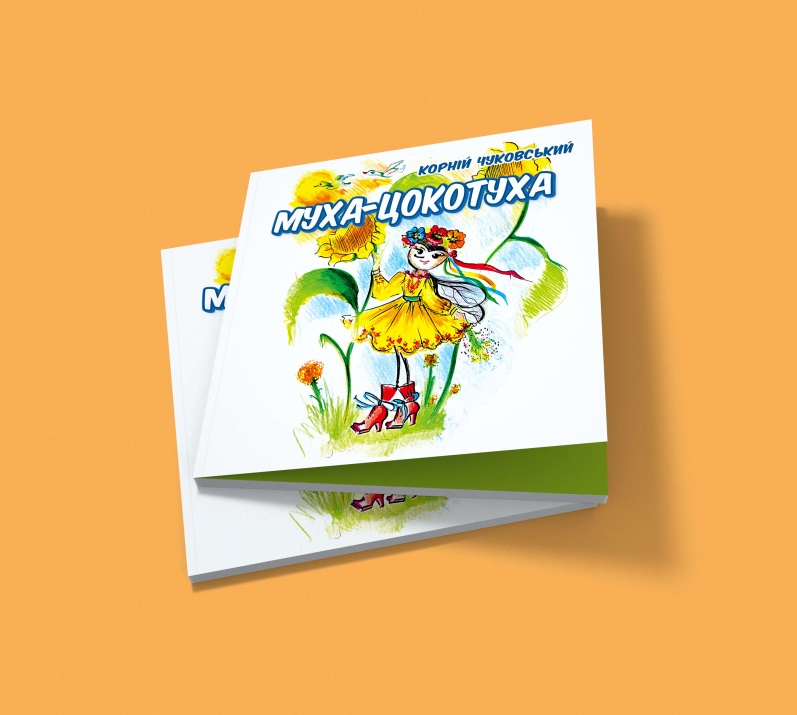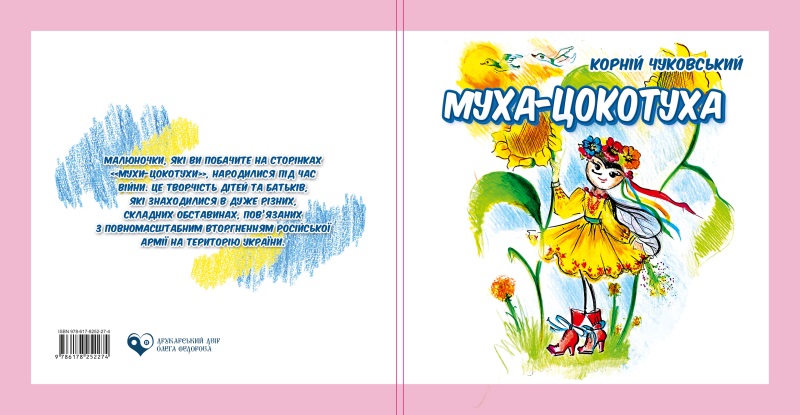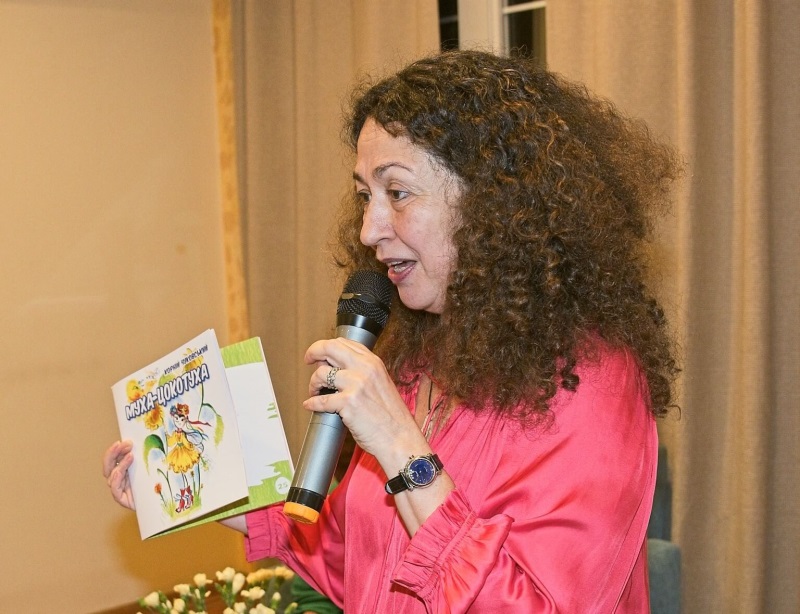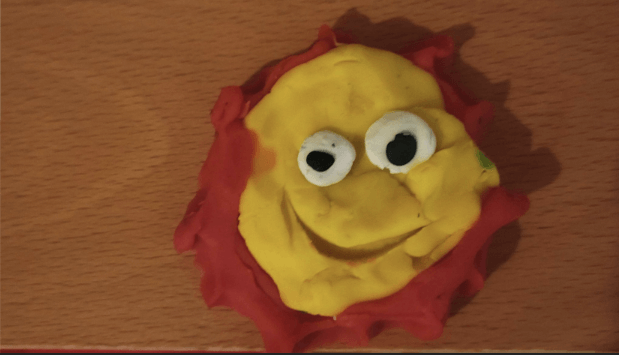This Week’s Guest
Developmental, Individual differences, Relationship-based (DIR) Expert Training Leader and Clinical Social Worker in Psychotherapy Private Practice, Galina Itskovich, is the Director at the Psychoanalytic Psychotherapy Study Center (PPSC) Refugee Support Project “On The Move“ and recently presented “AFTER TRAUMA: Promoting co-regulation through parent-child play” (which can be viewed until December 10th, 2023) at the International Council on Development and Learning (ICDL) DIR/Floortime conference in October.
This Week’s Topic
Today we are discussing grounding techniques, using emotionally meaningful objects, affect cueing when we’re grounding and being aware of ourselves so we can co-regulate to down-regulate our partner, and setting our expectations, all in the context of trauma. Galina Itskovich shares her experiences working online with refugees of war and parents in Ukraine, giving us tips and techniques when dealing with trauma with our own children–whether it be a life-or-death scenario, watching news stories about war that produce anxiety in our children, or other forms of fear-provoking situations.
Regulating through Trauma
Where and How to Begin?
Terrible events happen to everyone. It’s what we do with that that’s important. It’s good when we have somebody by our side to help us go through it in one piece, physically and emotionally. Thankfully, the physical part of the war will come to an end one day, but the emotional part will stay with us for years. We need to figure out how to go through it in the moment, how to live through it, how to deal with the chronic stress and constant anxiety, and how to make sense of it after it’s over. It’s really a lot.
I asked Galina how she begins a conversation with a family going through war. She said that she starts with herself. She needs to calm down. She cannot work with them if she is stressed. She can’t breathe nor attune to their stress if she is deafened with her own stress, she explains. Stress is something that’s in our bodies a lot and we feel it right away.
Just weeks before the Ukrainian war, Galina was in vacation in Quito, Ecuador. She was standing on the balcony appreciating the view when an earthquake started. She experienced what her clients experience in that moment. Time started moving very slowly, she said. She felt like she was in slow motion. The stones of the building started falling and the bell tower started chiming. She was in her own movie realizing it was an earthquake when someone came for her and she moved just in time. Time is very slow during trauma, she shares. Our decisions are ‘off’.
Regulation Techniques
So, the first thing you do is to un-traumatize yourself. You use whatever tools you have, Galina says. We don’t apply any technique in isolation. It needs to make sense.
Crossing the Midline You can hug yourself which is your arms crossing the midline of your body. Brain hemispheres communicate with each other. When you have a child next to you, you can hug the child as well and the child can hug you, if you get the child’s permission.
Breathing Next, you can breathe a full, deep breath. You put the air into your stomach and feel your rib cage expand. If you have time you can do a visualization, following the air flow into your rib cage by putting your hands on your stomach to watch your hands rise as the breathe comes in.
In Dr. Stephen Porges’ Polyvagal Theory, Galina shares that your response depends if you learn about something on the news or if you are in danger and need to run. If you learn about something traumatic on the news, you need to calm down first. But if you are in imminent danger and need to run, you need to get into a ventral vagal state where you are ready for action. You need to be ready to run, but not be anxious, which causes mobilization.
Anxiety is good, Galina shares. It prevented us from getting eaten by wild animals by noticing danger. We survived because of that. We need to be present and help each other to survive, so we need to co-regulate with a scared child.
Grounding If you want to do a little grounding, you need to use your environment. See where you are, how safe is it and what you can do. In cases where refugees are in very crowded spaces, all you might have is the ground and the floor. You can shift your weight and pay attention. Shift your weight from left to right. You need to move, but you can’t take a walk if it’s not safe, but you can shift your weight.
Muscle Release You can release your neck and jaw muscles. You can release your neck muscles as you shift your weight from left to right. As you pay attention to parts of your body, you will see if you need to tense up or release. You feel it tense up and then release it. If you try to tense up but have nowhere to go, you will realize that you have been too tense all along.
Emotionally Meaningful Objects You can use emotionally meaningful objects or transitional objects–things that remind you of your home. It can be your favourite pen or the key to your house. One of the refugees had this idea to hold onto their house key while doing the grounding exercises because it felt good. I wondered if it could be more anxiety provoking if you’re thinking about going home, but your home was destroyed. Galina says that maybe it wasn’t destroyed and you have hope. Or you could imagine a door that the key will open one day.
I asked about soothing stones, which you can hold in your hand and feel the smooth surface of the stone to calm yourself. By focusing your attention on the object, you can help calm anxiety. Galina painted a fish on a stone that she found and now it’s meaningful to her (meaning making) and she can hold on to it.
As a parent, you can encourage your child to use a favourite object, Galina offers. This is good for early separation from the primary attachment figure, the parent, for instance. For a child separating from the parent for the first time, it’s very scary and difficult, especially if you don’t have object constancy yet. The child doesn’t know if they will ever see the parent again. I shared how Dr. Gordon Neufeld talks about objects to preserve attachment such as putting stickers in the child’s lunch bag so your children hold on to you while at school (as one example).
This is even more meaningful, Galina responds, because now it’s your safety object. If you’re worried too much about what’s happening, hold on to the rock, or the key, or the pendant we made together. Hold on to that. Can you feel it? Is it smooth? Is it cold? Is it soft? Is it hard? Is it warm? While you’re thinking about the object, you are no longer thinking about when your parent will return.
Mind-Body Connection
If you shift your cognition, Galina explains, you can shift your emotional attention. You cannot be tense and relaxed at the same time, she adds. If your mind relaxes, your body will follow and if you relax your body, your mind will have to follow as well. It’s really important to understand this connection and see how it works.
Our Emotional Immune System
Don’t work against common sense, Galina adds. She has seen this with some refugees who say that their child didn’t experience any problems because they shielded the child from the horrors going on, then they don’t understand why the child is showing so many symptoms afterwards. As she then works with the child with different media such as kinetic sand or drawings, horrible content starts coming out. This was a child dealing with multiple fears and the child’s imagination drew things even worse than what was going on in real life.
During Covid you had people in full isolation for over a year or longer, Galina says, and when they come out, they caught every virus that came along. We have to take care of our emotional immune system, and when you lie too much, it really affects the Relationship, she adds. It’s not a good idea to lie to kids. It’s important to find meaningful, appropriate language, she asserts, and it’s important to figure out how to emotionally express how you actually feel.
I brought up the movie Life is Beautiful and Galina shook her head. Forget this movie, she said. Whatever experience you go through, it needs to be real. We don’t want to present this additional challenge on our children in real life, Galina says. It’s important to be together, to be co-regulated, and to share. If your child caught a glimpse of what was happening, it’s ok to say, “I’m scared, too” rather than deny the feeling. We have been teaching them to name feelings. If they observe us being upset and we say we are happy, it adds confusion.
Ukrainian Story Book with Children’s Drawings
An art therapist in New Jersey was working with some of the children who were producing drawings that are shared in a book, which is in Ukrainian, and available for purchase via PayPal to Galina’s email address. The book displays drawings of the enemy, a big spider who has captured a fly. The spider is the symbolic representation of what was happening to them because they are no longer in their country. The spider is there.



Setting Expectations
As adults in our higher Functional Emotional Developmental Capacities (FEDCs), we are dealing with multiple realities, Galina begins, and multiple timelines, whereas kids are dealing with the immediate timeline, depending on where they are at developmentally. We need to have the perspective of what’s going to happen next and we have to have a plan. When we lose control it’s a very painful, mindboggling situation for us, as capable adults. It’s a huge blow, so going back to the hugging exercise is the space that you can control. As a therapist, Galina can’t control that step for anyone, but she can stand right in front of them.
She had very moving feedback from someone in the war zone. A parent and child heard blasts and ran to each other and held each other. Galina said that this was a misunderstanding because in that situation, they needed to run. These are multiple perspectives and multiple expectations, Galina says. You do need to comfort the child as a parent, but as the adult you also need to know that you need to run and take action.
Galina can set expectations with the adults, which would be different from the expectation she would have with a child, and with the expectation they have from her. The mental health professional cannot perform magic and shield anyone from their experiences. But, she can give them tools that have the potential to work and work for other people. That’s all she had, so setting expectations correctly can help diminish disappointment.
Affect Cueing and Co-Regulation
We usually say that self-regulation stems from co-regulation as you first co-regulate with parents and eventually learn how to self-regulate. At the ICDL DIR/Floortime conference, Galina gave a different spin on this when she said that the parent needs to focus on self-regulation first before co-regulation–but she meant with themself. That is, an adult must be self-regulated before they have the capacity to co-regulate with a child. In this case, we’re not talking about development, but how an adult can have the capacity to co-regulate.
Humming Galina says that you have to focus on your breathing and your own body in space, your ability to relax, and use your vocal cords to relax your vagus nerve, such as by humming.
Cold water You can put your face in a bowl of cold water, or hold onto an ice cube and rub it in your hand or in your face. You can use the ice cube as a visualization object by imagining that as the ice cube melts, so does your anxiety.
Square breathing Breathe in on 4. Hold for 4. Breathe out for 4. Hold for 4. Repeat it many times.
Squeeze and release You can do this for up to 300 times per day, Dr. Porges says, as you breathe, Galina reports. Galina was demonstrating this by squeezing her fingers and saying to be aware of your surroundings. If you are anxious, you move into the headspace, she alerts us, so you see, but you do not see. You focus on what you see, which allows you to forget about the present moment for a second, but you can still see where you are going. This can help you stay active, but calm.
Locating your Stress in your Body Try to figure out your feeling, name it, and locate your feeling or stress in your body. Some people feel a knot in their stomach, some people feel constricted breathing, some feel a burst of blood in their head, and some feel weak arms and legs. It’s important to know where you feel your stress, and you can then ask your child where their stress is. What does it feel like? Where is it?
Repetition as the Learning Medium I asked Galina what to do if the child can’t answer or doesn’t know how to answer. She said that you keep asking and repetition becomes the learning medium. I proposed that the child might just repeat what you say as a script, without actually having that interoception yet. Galina said that you can rub your stomach and say, “Ahhh, that feels better. What about your tummy?” If the child is in the sympathetic state of stress, you can ask if it’s ok if you touch their tummy. And you can breathe together.
It’s all Play
Play is not an isolated event we do when we feel good. We play when we’re sad and anxious, too. We may play differently in those cases, but we will be playing together, nonetheless. Whether it’s playing with our breath, or with our transition objects, with each other, or with our ideas, see where the child takes it, meeting them where they are at. Galina says you can have a simple dialogue about why we are here and wonder what is happening, asking the child, “What do you think is happening out there?” Kids sometimes ascribe meaning from video games or other experiences. We can follow it, or we can distinguish between the video game and real life.
Many parents relay to Galina that in stressful circumstances that their kids on the spectrum became little adults with no more tantrums, disagreements, or insistence on the routine. Our job is to make it easier on them and to not let them go through it alone. Be with them, whatever their experiences are. Galina says it’s important to be real. It’s important to be available to our children, and it’s important to play through whatever happens to us–and that play is a very broad definition.
This week’s PRACTICE TIP:
This week let’s practice self-regulating with the calming techniques that Galina suggested when we find ourselves overwhelmed when with our children.
For example: Do you have a soothing object that you can keep in your pocket to provide grounding when you feel overwhelmed? Can you focus on your breathing? You can model these techniques for your child, as well.
Thank you to Galina Itskovich for her gracious and heartfelt volunteer work with parents and children affected by war, and for sharing her experiences with us. Please consider sharing this post on social media, and feel free to share relevant experiences, questions, or comments in the Comments section below.
Until next time, here’s to choosing play and experiencing joy everyday!



